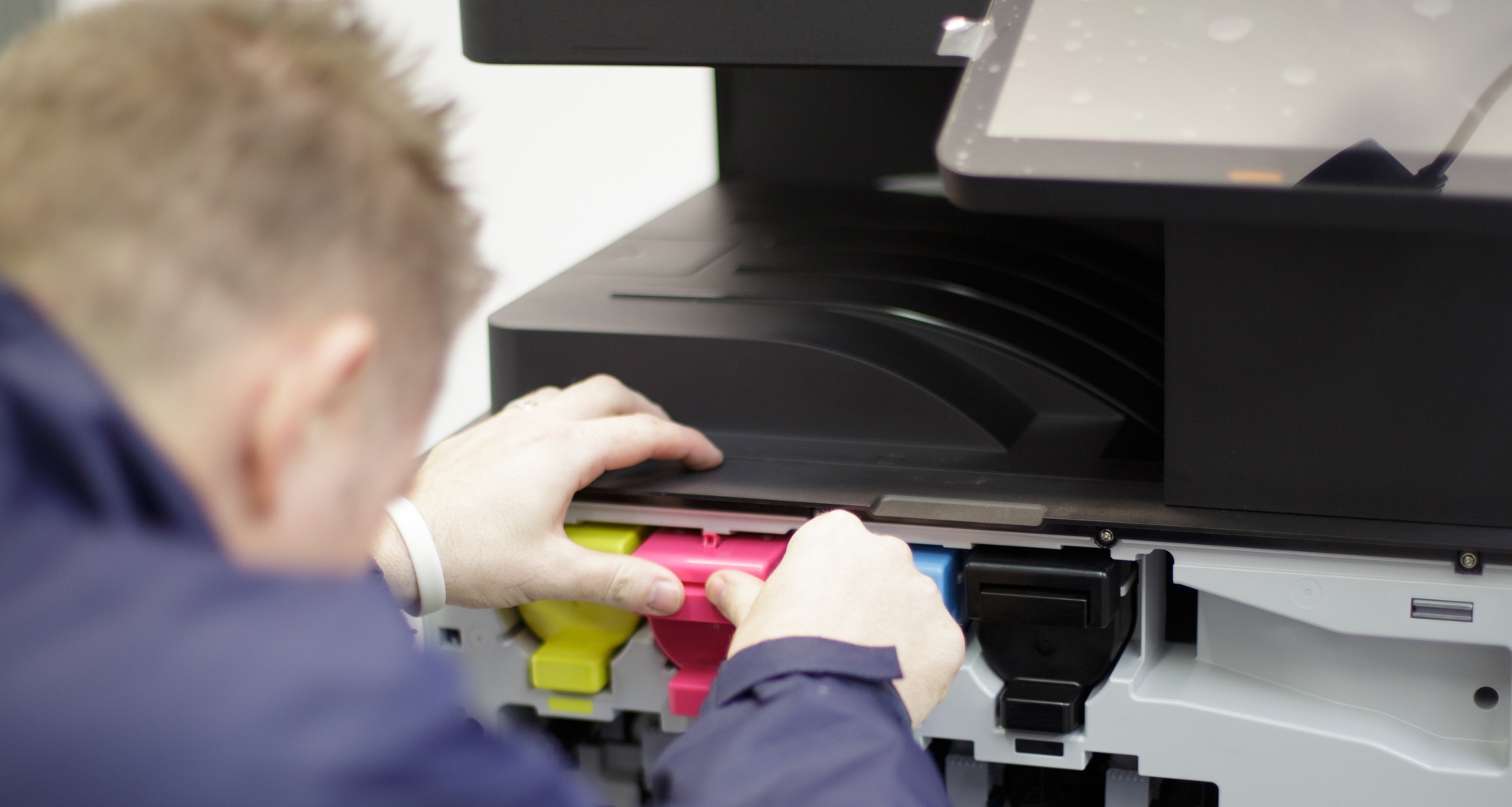What Is A Managed Print Service?
Posted on 14th September 2022 at 09:36
One of the most vital (and often undervalued) components of a busy office is the printer. The printer is at the heart of a business’s ability to communicate within teams and with clients and customers.
A managed print service offers businesses a single view of their whole print infrastructure. MPS ensures that printer resources provide the best value to an organisation. A well-structured MPS solution will keep your company printing when it matters the most and give the best overall user experience.
If you’re researching MPS, but are unsure if it would work for your business, here are some reasons to consider a managed print service.
Why should I consider a managed print service?
Managed print services bring efficiency and reliability to your print environment. MPS considers your whole print fleet and assesses where you can make time or cost savings. These savings translate into improved efficiency and reduced costs.
The whole point of MPS is to make managing your printers and copiers faster and cheaper—all whilst improving the overall level of performance of printer equipment within your organisation.
MPS delivers accountability, productivity and security benefits to your business. By understanding your use of printers and copiers, MPS will provide you with a complete printer management solution tailored to your specific needs.
How is a managed print service different from a traditional print service?
Managed print services providers operate as a single point of contact for all of your printer and photocopier requirements. MPS provides all hardware, toners and ink cartridges for your business, alongside all service, maintenance, consumables and spare parts.
Inclusive labour and engineering costs making the management of printing costs a known factor within a business.
An MPS provider performs frequent service checks to ensure that everything is working. They’ll schedule service and maintenance to ensure all hardware is operating optimally.
An MPS contract covers all printer faults, minimising the time you need to spend resolving such issues, maximising print productivity.
MPS assess printers usage, how to minimise the costs, and how technology can increase productivity and decrease downtime.
Various methodologies are considered, from consolidating hardware to introducing configuration changes that improve printer performance.
MPS includes a reporting component, whereby individual users, teams or departments can be held accountable for their usage. This combination of analysis plus hardware optimisation is at the heart of MPS.

What will a managed print service do for my business?
Managed print services can offer significant benefits for your business without you needing to allocate any additional time or resource.
What are the benefits of MPS?
The main benefits of MPS are:
Cost savings
A managed print solution will be cheaper than running separate arrangements across multiple machines and suppliers. Print costs will reflect overall volume across your fleet of devices; ink and replacement toners will be discounted significantly.
Time savings
Printer downtime can destroy productivity, causing entire business functions to grind to a halt. Planning the upgrade or replacement of hardware and knowing which hardware combination will best achieve business aims takes time to manage. Managing maintenance and supplies for printing equipment takes time and pulls staff resource from other, more critical tasks. MPS seeks to remove this burden.
Less downtime
Properly maintained printers develop faults less frequently. When a fault does occur, resolution tends to be quicker. When a printer is fully managed, it will develop fewer faults, have less downtime and be more performant. MPS keeps your office printers printing so that they don’t become a bottleneck in your business.
Simplify supplier arrangements
Sourcing toner cartridges, other consumables, spare parts, and engineers can significantly drain time and staff morale. By consolidating print under a single, managed service, you can cut this low productivity from your entire organisation.
GDPR compliance
Copiers and printers store document data for some time. Abuse of scanners can allow personal data to leak from an organisation; poor document management is a significant GDPR risk factor. Personal data matters, and the GDPR is increasingly being used to prosecute poor data practices. MPS will help you to adopt a set of best practices around data security, allowing you to show that GDPR is taken seriously within your company.
Improved Security
MFDs and printers are attack vectors within any network. MPS will help you simplify the management of devices and ensure a robust threat posture. Separate, non-managed hardware remains a risk factor – MPS prevents this risk by helping you to identify secure printing technology and best practice.
Digital Transformation
The copier is still at the heart of document management and document workflows. As one of the key input devices (alongside email/digital files), an inefficient hardware solution will hinder digital transformation goals. If your organisation is undergoing digital transformation initiatives, MPS will provide the data to back up investment decisions.
Print Analysis
If your organisation uses a significant print volume or has a widely dispersed print fleet, print analytics software offers visibility, identifying heavy print users, inefficient printing practices, and connected devices. Once print practices are fully understood, MPS helps to find opportunities to rationalise and reduce usage.
Paper Management
Paper costs can be high; unclaimed print contributes to unnecessary expense, wasted paper, toner, electricity and waste disposal. MPS can help you to prevent unclaimed printing from being generated in the first place. It will help reduce paper usage and waste, giving significant environmental and sustainability benefits.
In smaller organisations or small businesses, a hybrid approach to MPS can offer many of the same benefits corporations enjoy.
How do I go about selecting a managed print provider?
The first step for any business considering an MPS is to determine what your current print needs are. Include volumes, the number of machines, what is working well and what is causing issues.
A print audit is usually the best way to achieve this. A comprehensive audit of costs and usage will answer many of these questions for you alongside interviews with crucial print users.
It is often useful to identify an MPS partner ahead of this process. They will help in the automatic collection of usage data, making the whole process easier. Speak to candidate partners about a free print audit to discuss the opportunity that MPS presents to your business.
Conclusion
Managed print services offer more than just cost savings. MPS improves productivity, streamlines workflow, makes printing more efficient, and protects your company’s physical print assets’ health and integrity.
MPS minimises costs, rationalises print volumes and maximises performance without allocating your resources to monitor usage.
With MPS, you focus your efforts on developing new products & services and giving your company a competitive advantage in the marketplace. While your MPS provider focusses on ensuring that your print fleet is configured to best support you.
Tagged as: Managed Print Services
Share this post:

